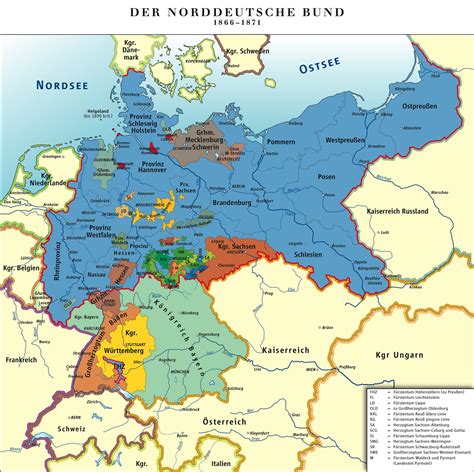Explore the rich history of Lebanon, from ancient origins and Phoenician civilization to Roman rule, Islamic conquest, and French mandate. Uncover its captivating past.
Ancient Origins
The history of Lebanon dates back to ancient times, with evidence of human settlement in the region dating back to at least 7000 BC. The earliest known inhabitants of Lebanon were the Phoenicians, a seafaring people who established a network of city-states along the Mediterranean coast. These city-states, including Tyre, Sidon, and Byblos, played a crucial role in the ancient world, trading goods such as cedar wood, glass, and purple dye.
Lebanon’s strategic location made it a prized possession for many ancient empires, including the Assyrians, Babylonians, and Egyptians. The influence of these civilizations can be seen in Lebanon’s art, architecture, and language. The ancient origins of Lebanon are also evident in the country’s rich cultural heritage, which includes a diverse mix of traditions, religions, and customs.
Lebanon’s ancient history is also marked by periods of conflict and conquest, as various empires and kingdoms sought to control the region. Despite these challenges, the people of Lebanon have managed to preserve their unique identity and traditions, which continue to thrive to this day.
The ancient origins of Lebanon have had a lasting impact on the country’s modern identity, shaping its culture, language, and traditions. From the Phoenicians to the present day, Lebanon’s history is a testament to the resilience and strength of its people.
Phoenician Civilization
The history of Lebanon is deeply intertwined with the Phoenician Civilization, which emerged around 1200 BCE in the coastal areas of present-day Lebanon. The Phoenicians were known for their maritime prowess and established thriving trade networks across the Mediterranean, contributing to the spread of their influence in the region.
Under the Phoenician Civilization, cities such as Tyre, Sidon, and Byblos flourished as centers of commerce and culture. The Phoenicians were renowned for their skilled craftsmanship, particularly in the production of purple dye, glass, and cedar wood, which were highly sought after commodities in the ancient world.
Their seafaring expertise allowed them to establish colonies in places like Carthage (in present-day Tunisia) and expand their sphere of influence. The Phoenicians also made significant contributions to the development of writing systems, with the invention of the Phoenician alphabet, which subsequently became the basis for many modern writing systems.
Despite facing challenges from neighboring powers such as the Assyrians and Persians, the Phoenicians managed to maintain their cultural identity and continue their maritime trade activities for several centuries. Their legacy endures in the archaeological remains of ancient port cities, as well as in the linguistic and cultural influences that they imparted on the Mediterranean world.
Roman Rule
Roman Rule in Lebanon took place during the Roman Empire’s expansion into the Levant region. Lebanon, known as Phoenicia, was already an established center of commerce and trade when it became part of the Roman Empire. The Roman rule in Lebanon lasted for several centuries, leaving a lasting impact on the country’s culture, architecture, and governance.
During the Roman period, Lebanon saw significant growth and development, with the construction of impressive infrastructure such as temples, roads, and aqueducts. The city of Baalbek, for example, became a prominent religious center with the construction of the Temple of Bacchus and the Temple of Jupiter. These architectural marvels still stand as a testimony to the Roman influence in Lebanon.
The Romans also introduced their legal and administrative systems to Lebanon, which had a lasting impact on the region. The cities of Tyre, Sidon, and Beirut became important urban centers under Roman rule, serving as crucial hubs for trade and commerce in the Eastern Mediterranean.
The Roman rule in Lebanon came to an end with the rise of the Byzantine Empire, which succeeded the Roman Empire in the east. Despite the end of direct Roman rule, the influence of Roman culture and architecture continued to shape Lebanon for centuries to come, leaving behind a rich and diverse cultural heritage that still resonates in the country today.
Islamic Conquest
The Islamic conquest of Lebanon refers to the invasion and subsequent incorporation of the region into the Islamic Caliphate. This significant event in Lebanese history occurred in the 7th century, following the death of the Prophet Muhammad and the spread of Islam across the Arabian Peninsula. The conquest brought about major cultural, social, and political changes to the region, shaping its identity for centuries to come.
During the Islamic conquest, the indigenous population of Lebanon, which was predominantly Christian at the time, experienced a shift in religious and political power. Many local Christian communities were encouraged to convert to Islam, while others were allowed to continue practicing their religion under certain conditions. The Islamic rulers established a new political and administrative system, integrating Lebanon into the wider Islamic world and imposing Islamic law and governance over the region.
One of the most enduring legacies of the Islamic conquest in Lebanon is the lasting influence of Islamic culture and traditions on the local population. Arabic language, Islamic architecture, and the spread of Islamic religious practices all became integral parts of Lebanese society. Additionally, the integration of Lebanon into the Islamic caliphate facilitated trade, intellectual exchange, and the development of new economic and cultural ties with other Islamic territories.
Despite the transformative impact of the Islamic conquest, Lebanon’s history is characterized by a complex and diverse interplay of religious and cultural influences. Throughout subsequent centuries, the region continued to be shaped by a dynamic mix of Islamic, Christian, and other cultural traditions, reflecting the enduring legacy of its rich historical past.
French Mandate
French Mandate
The French Mandate of Lebanon began after World War I, following the collapse of the Ottoman Empire. Lebanon was placed under French control in 1920, as part of the partitioning of the former Ottoman territories by the League of Nations. The French Mandate lasted until 1943, when Lebanon gained its independence.
During the French Mandate, Lebanon experienced significant social and political changes. The French implemented a system of governance that favored the Christian population over the Muslim majority, leading to sectarian tensions and conflicts. This period also saw the rise of nationalist movements and calls for independence from French rule.
Under the French Mandate, Lebanon underwent modernization and urban development, with the construction of infrastructure and institutions. However, economic and social inequalities persisted, and the gap between the rich and poor widened.
In 1943, Lebanon finally achieved independence, marking the end of the French Mandate. The legacy of this period continues to shape Lebanon’s politics and society, as the country grapples with its complex history and diverse population.














